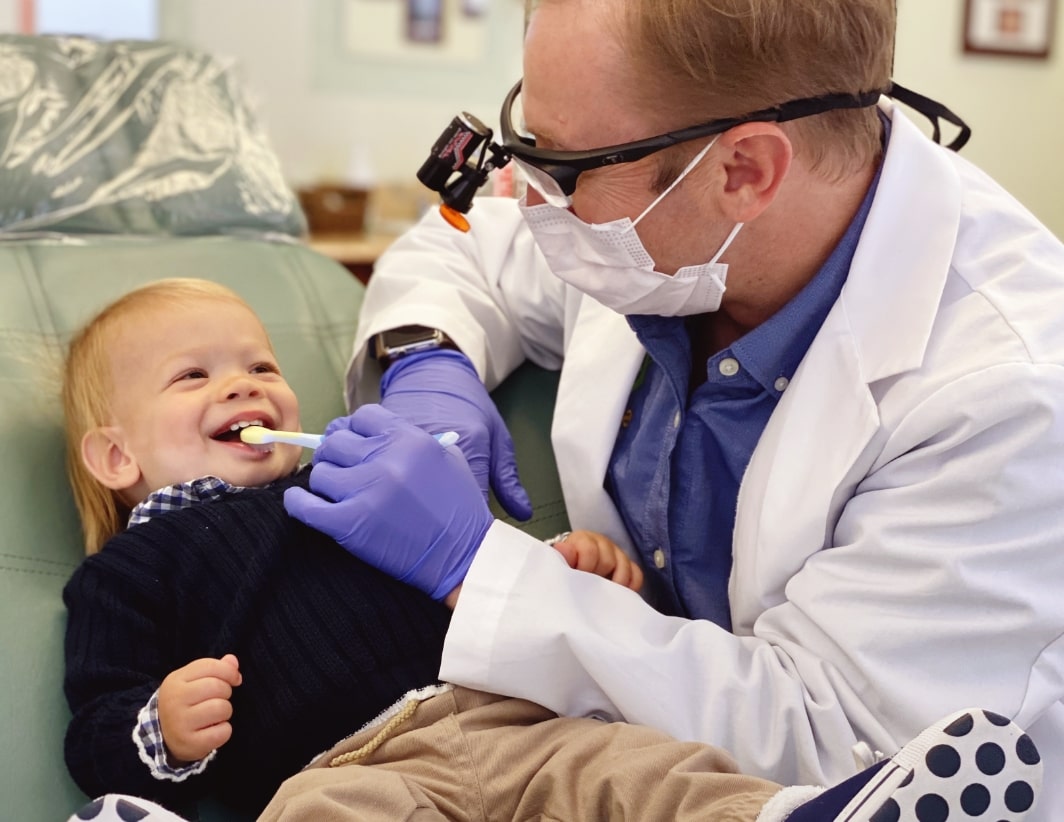Why Early Intervention Matters for Children
Starting orthodontic care at an early age can be beneficial for both oral and overall health. Early orthodontic assessments for children, beginning as young as age 2, can identify issues related to airway function, jaw development, and breathing patterns before they become significant problems.
The Connection Between Jaw Development and Airway Health
The development of a child’s jaw directly affects their airway, breathing, and sleep quality. A narrow jaw or misaligned bite can contribute to airway obstruction, leading to breathing difficulties such as snoring, sleep-disordered breathing, When left untreated, these issues can impact a child’s behavior, focus, and overall well-being. When the jaws do not develop in balance, it can also place strain on the temporomandibular joint (TMJ), contributing to issues with jaw function and comfort later in life.
By guiding jaw development properly in children, we can help ensure that the airway remains open and functional, reducing the likelihood of breathing-related complications. Addressing jaw growth early may reduce the chances of developing TMJ dysfunction in adolescence or adulthood.
Signs Your Children May Need Early Orthodontic Care
Recognizing the signs of airway and jaw development issues early on can make a significant difference in your child’s health. While some orthodontic problems in children are visible, others may be more subtle and require a professional evaluation.
Some common signs that indicate the need for airway-focused orthodontic care in children include:
- Mouth breathing or habitual snoring
- Crowded or misaligned teeth at an early age
- Speech difficulties or improper tongue posture
- Frequent allergies or nasal congestion affecting breathing
- Behavioral concerns such as hyperactivity or difficulty focusing (often linked to poor sleep quality)
Some children may also experience jaw clicking or discomfort, which could signal early TMJ problems tied to developmental concerns. If your child exhibits any of these signs, scheduling an orthodontic evaluation can help determine whether early intervention is necessary.
How Airway-Focused Orthodontics Works
The goal of airway-focused orthodontics is to correct developmental issues before they lead to more severe problems. By using non-invasive, growth-guided techniques, we help optimize jaw development and airway function.
A Preventative & Growth-Guided Approach
Guiding jaw growth during these formative years helps prevent future complications with dental alignment, breathing, and even TMJ disorders. Rather than waiting for problems to arise, we take a proactive approach by assessing jaw and airway development at an early age. Through careful evaluation, we can determine if a child would benefit from early orthodontic treatment.
By using non-extraction, expansion-based techniques, we encourage natural growth patterns that support both breathing and dental alignment. This helps prevent the need for more extensive orthodontic work in the future.
Treatment Options for Young Children
Every child’s needs are different, so treatment plans are customized based on growth patterns, bite relationships, and airway-related findings. Common components of airway-focused orthodontic care for children may include:
- Early expansion appliances to widen narrow arches and create more space for the tongue and developing teeth
- Growth-guiding appliances that support forward and balanced jaw development
- Minimally invasive orthodontic techniques that work with the child’s natural growth
Our practice does not provide myofunctional therapy in-office. However, myofunctional therapy, offered by external providers, can complement airway-focused orthodontic care by helping children develop healthier tongue posture and breathing habits. When appropriate and beneficial, we can recommend trusted myofunctional therapy providers as part of a comprehensive care plan.


